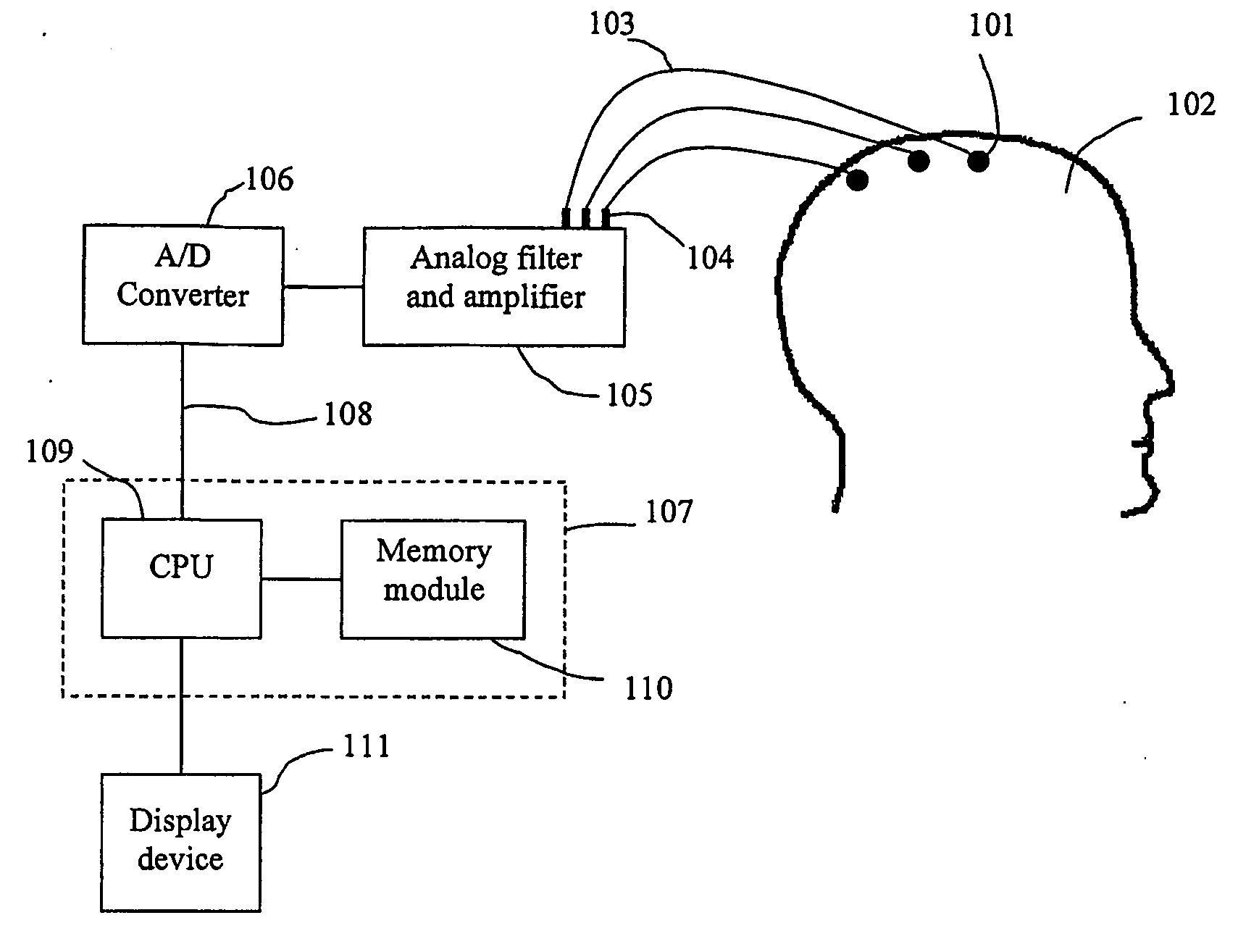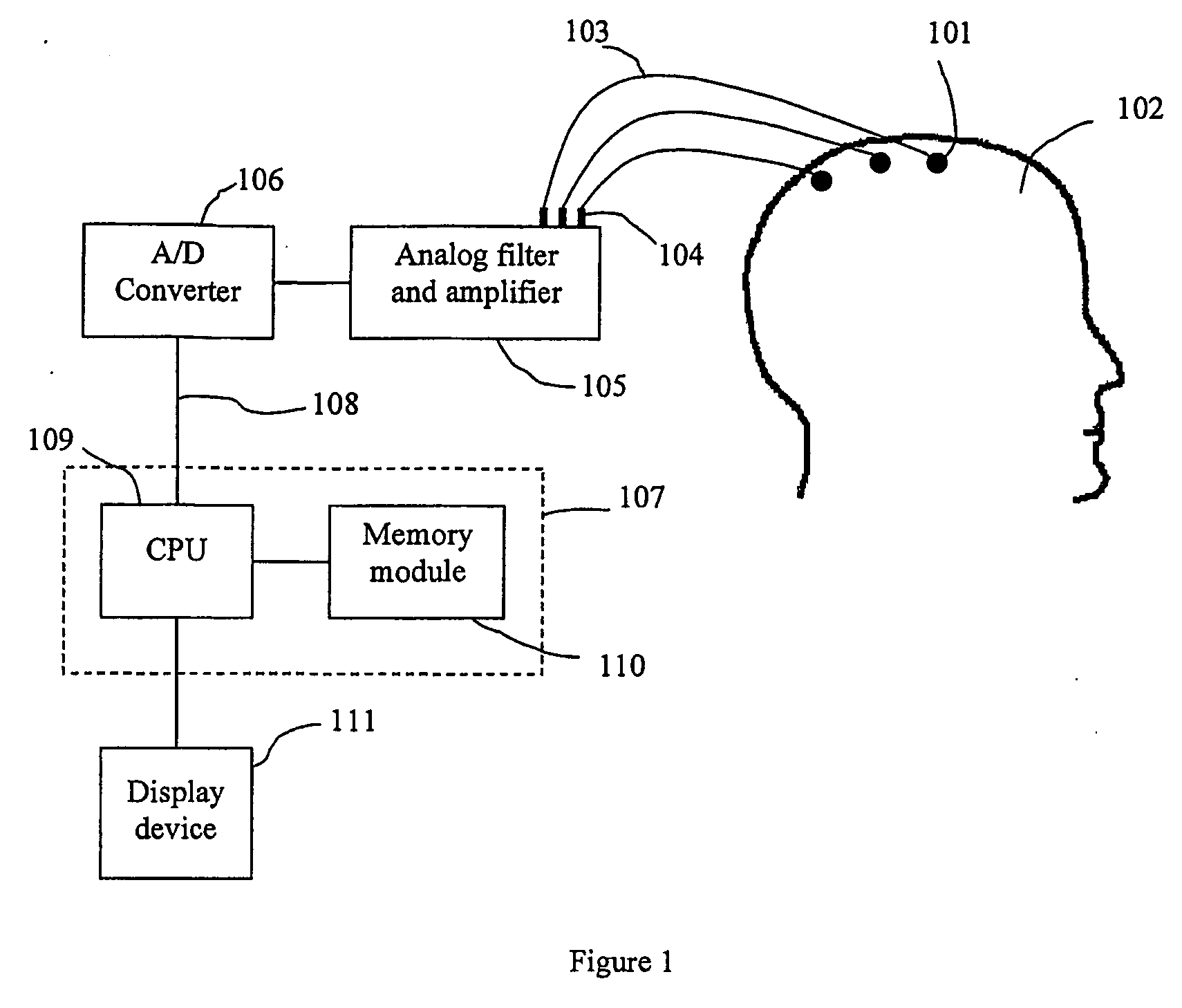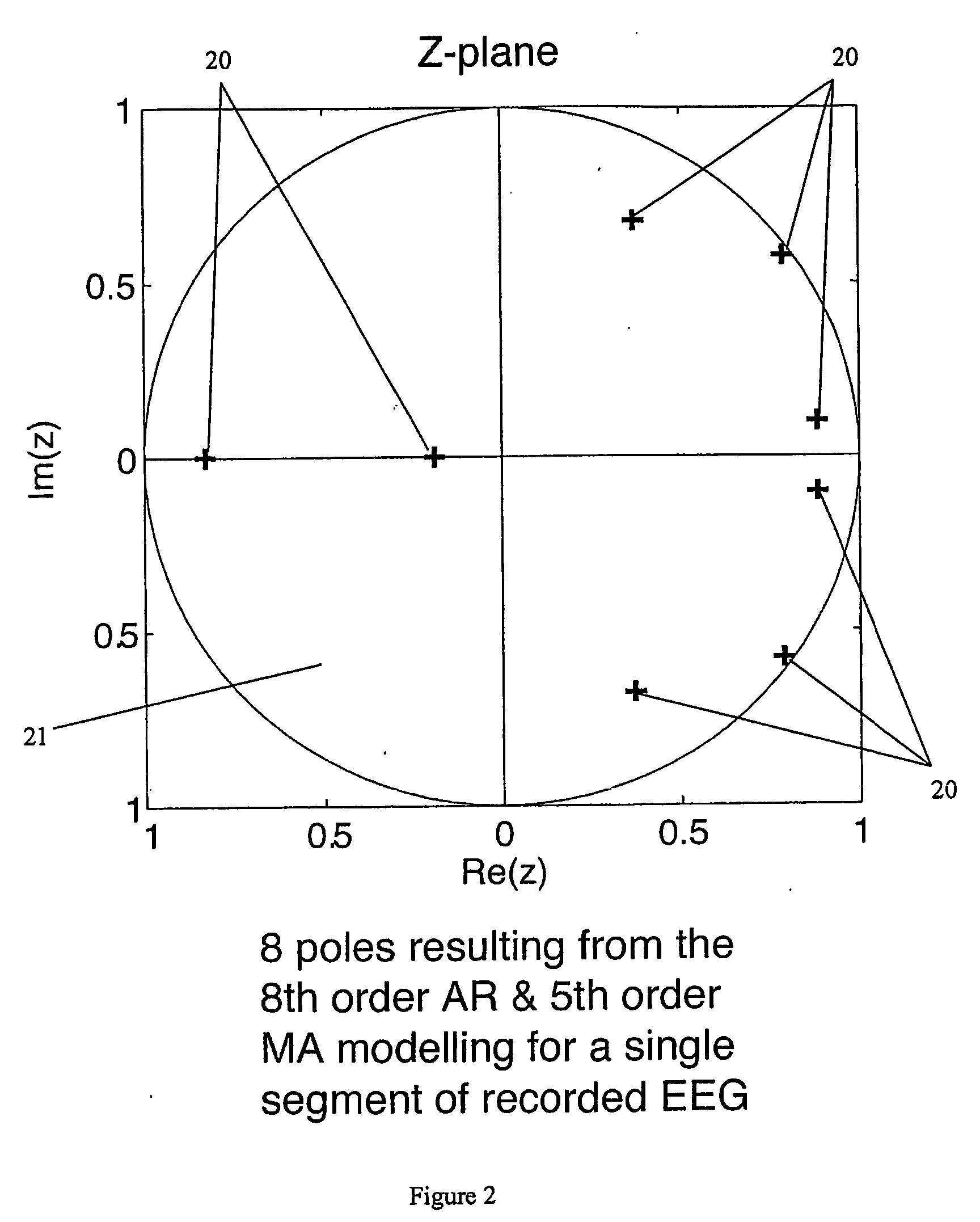Method of monitoring brain function
a brain function and brain function technology, applied in the field of mathematical models, can solve the problems of limited clinical ability of patients to measure and monitor brain function, and achieve the effect of improving clinical accuracy and reducing clinical risk
- Summary
- Abstract
- Description
- Claims
- Application Information
AI Technical Summary
Problems solved by technology
Method used
Image
Examples
Embodiment Construction
[0140]FIG. 1 is a diagram showing a preferred embodiment of the physical components of the system. The EEG signals are detected by multiple electrodes 101 from the scalp of a subject 102, where the electrodes are positioned preferably arranged according to the international 10:20 standard system with the addition of mid-point electrodes as necessary. Preferably, the EEG signals are recorded referenced to linked ears using 64 scalp electrodes attached to an electrode cap using the nasion as a ground. Other techniques for recording the EEG can also be used.
[0141] It is preferable that the EEG is analysed as a sequence of overlapping fixed length segments. This technique is further described with reference to FIG. 10. FIG. 10 shows an example of a typical EEG signal 201 recorded from a subject over a period of 10 seconds. To illustrate the preferred sampling technique, it is assumed that recorded EEG signals are digitised and segmented into fixed, overlapping, 2 second segments. The f...
PUM
 Login to View More
Login to View More Abstract
Description
Claims
Application Information
 Login to View More
Login to View More - R&D
- Intellectual Property
- Life Sciences
- Materials
- Tech Scout
- Unparalleled Data Quality
- Higher Quality Content
- 60% Fewer Hallucinations
Browse by: Latest US Patents, China's latest patents, Technical Efficacy Thesaurus, Application Domain, Technology Topic, Popular Technical Reports.
© 2025 PatSnap. All rights reserved.Legal|Privacy policy|Modern Slavery Act Transparency Statement|Sitemap|About US| Contact US: help@patsnap.com



